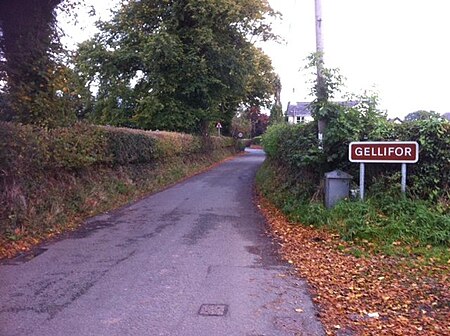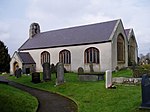Gellifor
LlangynhafalVillages in Denbighshire

Gellifor is a small village in the Vale of Clwyd, Wales. Located at the foot of the Clwydian Range, in the community of Llangynhafal, it is a largely residential settlement. Community facilities are limited but include a primary school and a chapel. The last shop and post office closed around 2000, and residents rely on the towns of Ruthin and Denbigh for access to many services. The population is over 200.
Excerpt from the Wikipedia article Gellifor (License: CC BY-SA 3.0, Authors, Images).Gellifor
Lôn yr Ysgol,
Geographical coordinates (GPS) Address Nearby Places Show on map
Geographical coordinates (GPS)
| Latitude | Longitude |
|---|---|
| N 53.152 ° | E -3.313 ° |
Address
Lôn yr Ysgol
LL15 1AY
Wales, United Kingdom
Open on Google Maps







